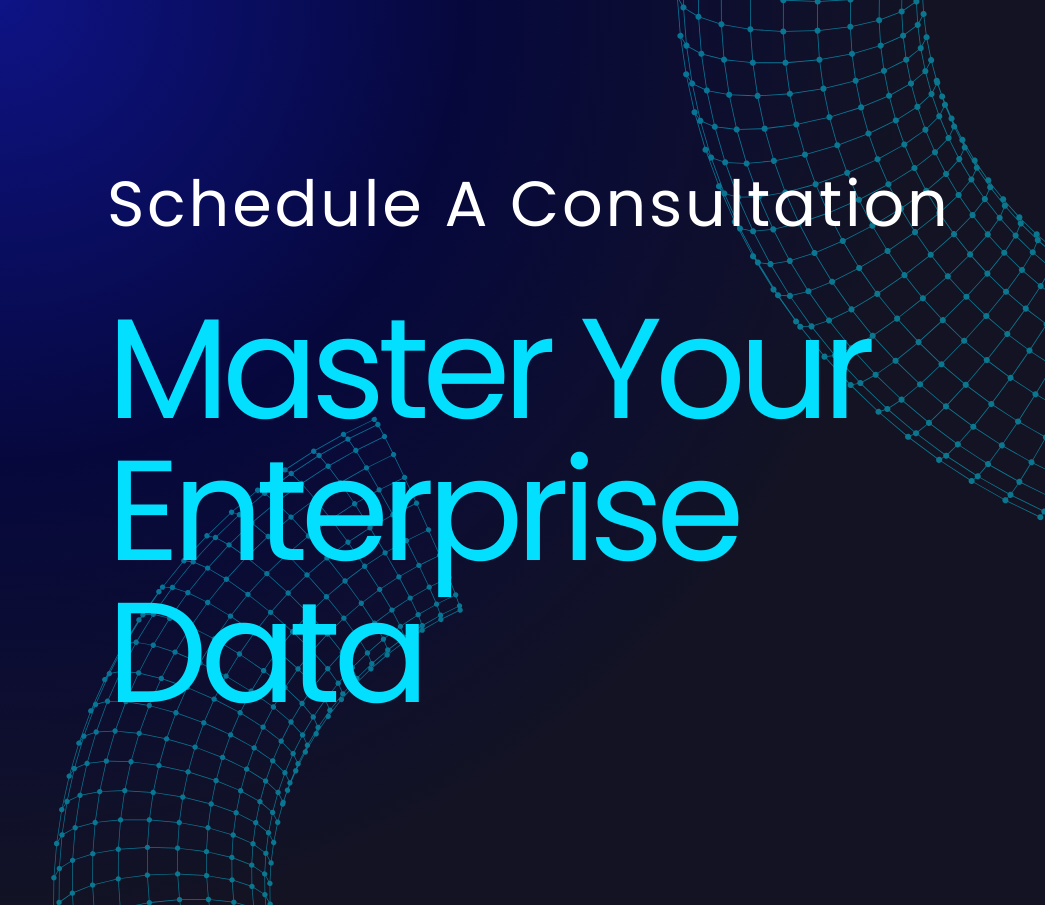In the rapidly evolving landscape of enterprise technology, the concept of multi-vendor evaluation has become more critical than ever. As organizations grapple with increasingly complex IT ecosystems, the ability to effectively assess and integrate solutions from multiple providers can be the difference between digital transformation success and costly failure. According to a recent Gartner study, companies that implement robust multi-vendor strategies report a 23% increase in operational efficiency and a 17% reduction in overall IT costs.
- The Imperative of Multi-Vendor Strategies
- Needs Assessment: The Foundation of Strategic Decisions
- Vendor Landscape Analysis: Beyond the Hype
- Proof of Concept: Where the Rubber Meets the Road
- Contract Negotiation and SLA Development: The Devil in the Details
- Integration and Implementation: The Moment of Truth
- The Hidden Pitfalls: What No One Tells You About Multi-Vendor Strategies
The days of single-vendor loyalty are long gone, replaced by a nuanced approach that prioritizes best-of-breed solutions and strategic flexibility. However, navigating this multi-vendor terrain is not without its challenges. A survey by Forrester Research reveals that 68% of IT leaders struggle with integration issues when implementing multi-vendor solutions, while 52% report difficulties in managing vendor relationships effectively.
This guide aims to demystify the process of enterprise multi-vendor evaluation, offering a structured approach to selecting, integrating, and managing multiple technology providers. By following these critical stages, organizations can harness the full potential of a diverse vendor ecosystem while mitigating risks and optimizing investments. Whether you’re a CIO looking to overhaul your IT strategy or a project manager tasked with a specific multi-vendor initiative, this comprehensive roadmap will equip you with the insights and tools needed to make informed decisions and drive tangible business value.
Overview
- Multi-vendor strategies are crucial for modern enterprises, offering increased efficiency and cost savings.
- A structured evaluation process is essential, starting with a thorough needs assessment to align technology with business objectives.
- Vendor landscape analysis requires looking beyond marketing hype to assess true capabilities and cultural fit.
- Proof of concept testing is critical for simulating real-world scenarios and uncovering potential integration issues.
- Contract negotiation and SLA development are key to establishing clear expectations and aligning incentives.
- Successful integration and implementation depend on meticulous planning and effective change management.
- Hidden pitfalls like vendor finger-pointing and increased governance needs must be anticipated and addressed.
The Imperative of Multi-Vendor Strategies
In today’s complex enterprise landscape, the notion of a single-vendor solution has become as outdated as floppy disks. Yet, many organizations still cling to this antiquated approach, fearing the perceived complexity of multi-vendor environments. But here’s the truth: embracing a multi-vendor strategy isn’t just an option—it’s a competitive necessity.
The future belongs to companies that can orchestrate an ecosystem of vendors, not those who remain locked into single-provider dependencies.
Industry analyst at Gartner.
Consider this: according to a recent Forrester study, enterprises leveraging multi-vendor strategies report a 37% increase in innovation capabilities and a 28% reduction in overall IT costs. These aren’t just numbers; they’re a wake-up call for any organization still on the fence about diversifying their vendor portfolio.
But let’s be clear—navigating the multi-vendor landscape isn’t a walk in the park. It’s more like chess, where each move must be calculated, and the consequences of a misstep can be costly. This is where a structured evaluation process becomes not just useful, but critical.
Needs Assessment: The Foundation of Strategic Decisions
You might think you know what your enterprise needs. But do you really? The needs assessment stage is where assumptions go to die, and real requirements are born.
Start by asking the hard questions. What are the pain points that keep your CIO up at night? Where are the bottlenecks in your current systems? Don’t just focus on today’s problems—think about where you want to be in five years. According to a McKinsey report, 70% of complex IT projects fail due to misalignment between business needs and IT solutions. This statistic alone should make you pause and reconsider how thoroughly you’re assessing your needs.
Here’s a provocative thought: your biggest need might not be a new vendor at all, but rather a complete reimagining of your IT architecture. Are you ready for that conversation?
To conduct a thorough needs assessment:
- Engage stakeholders across departments, not just IT. Marketing, finance, and operations all have unique perspectives that can shape your requirements.
- Analyze current system performance metrics. Look for patterns in downtime, response times, and user complaints.
- Conduct a gap analysis between your current capabilities and future goals. This isn’t just about technology—it’s about business outcomes.
Remember, a well-executed needs assessment doesn’t just list requirements; it prioritizes them. Use techniques like the MoSCoW method (Must have, Should have, Could have, Won’t have) to categorize your needs. This prioritization will be crucial when you’re knee-deep in vendor proposals.
Vendor Landscape Analysis: Beyond the Hype
Once you’ve nailed down your needs, it’s time to survey the vendor landscape. But beware—this isn’t about collecting glossy brochures or watching slick product demos. It’s about cutting through the marketing hype to uncover the real capabilities and limitations of potential vendors.
In the world of enterprise IT, what vendors say they can do and what they can actually deliver are often two very different things.
CIO of a Fortune 500 company.
Start by casting a wide net. According to a Deloitte survey, enterprises that consider at least five vendors in their evaluation process report 30% higher satisfaction with their final selection. But don’t stop at the usual suspects. Look for emerging players who might bring innovative solutions to the table.
Here’s where many enterprises falter: they focus solely on features and forget about fit. A vendor might have all the bells and whistles, but if their culture and values don’t align with yours, you’re setting yourself up for a rocky relationship.
To conduct a comprehensive vendor landscape analysis:
- Utilize industry analyst reports like Gartner Magic Quadrants or Forrester Waves as a starting point, but don’t treat them as gospel.
- Leverage your professional network. Reach out to peers in similar industries for their experiences and recommendations.
- Investigate each vendor’s financial stability and market position. A cool product means nothing if the company won’t be around in five years.
- Assess the vendor’s roadmap and investment in R&D. Are they innovating, or just maintaining?
Here’s a thought that might ruffle some feathers: sometimes the best vendor isn’t the one with the most advanced technology, but the one most committed to your success. How do you measure that intangible quality?
Proof of Concept: Where the Rubber Meets the Road
If the needs assessment is the blueprint and the vendor landscape analysis is the material selection, then the proof of concept (PoC) is where you start actually building. This is where theory meets practice, and where many multi-vendor evaluations either soar or crash and burn.
A well-executed PoC isn’t just about testing features; it’s about simulating real-world scenarios that push the limits of the vendor’s capabilities. According to a study by the Project Management Institute, organizations that use rigorous PoC processes see a 28% reduction in project failures. That’s not just a statistic—it’s the difference between a successful implementation and a costly mistake.
A proof of concept is like a first date. Its your chance to see if theres chemistry before you commit to a long-term relationship.
IT Director at a leading e-commerce company.
But here’s where many enterprises go wrong: they treat the PoC as a checkbox exercise rather than a learning opportunity. Each PoC should be a mini-project that yields actionable insights, regardless of whether you move forward with that vendor or not.
To conduct an effective proof of concept:
- Define clear, measurable success criteria before you start. These should align directly with your prioritized needs from the assessment stage.
- Involve end-users in the PoC process. Their feedback is invaluable and can uncover usability issues that IT might miss.
- Test integration capabilities rigorously. In a multi-vendor environment, how well systems play together is often more important than individual features.
- Don’t just focus on technology—evaluate the vendor’s support and training capabilities during the PoC.
Here’s a controversial idea: consider running parallel PoCs with multiple vendors. Yes, it’s resource-intensive, but it provides direct comparisons that can be invaluable in your final decision.
Contract Negotiation and SLA Development: The Devil in the Details
You’ve assessed your needs, analyzed the landscape, and put potential solutions through their paces. Now comes the part that separates the amateurs from the professionals: contract negotiation and Service Level Agreement (SLA) development.
This isn’t just about haggling over price points. It’s about crafting a framework for a long-term partnership that aligns incentives and sets clear expectations. According to a study by the International Association for Contract & Commercial Management, companies with robust contract management processes see 9% higher annual revenues and 16% lower costs. Those numbers should make any CFO sit up and take notice.
A well-negotiated contract is like a good fence—it makes for better neighbors by clearly defining boundaries and responsibilities.
Legal counsel for a multinational tech corporation.
The key point is: many organizations focus solely on the legal aspects of the contract, neglecting the operational implications. Your contract should be a living document that guides day-to-day interactions, not just a tool for dispute resolution.
To excel in contract negotiation and SLA development:
- Involve a cross-functional team including legal, IT, finance, and operations. Each brings a unique perspective that can strengthen the agreement.
- Clearly define key performance indicators (KPIs) and tie them to business outcomes. Vague metrics lead to vague results.
- Build in flexibility for scaling and future changes. The only constant in IT is change, and your contract should reflect that reality.
- Don’t just focus on penalties for non-performance; include incentives for exceeding expectations.
Here’s a thought that might challenge conventional wisdom: sometimes the best contract isn’t the one with the lowest price, but the one that offers the most value alignment between you and the vendor. How do you quantify that in your negotiation process?
Integration and Implementation: The Moment of Truth
You’ve done your homework, run the tests, and signed on the dotted line. Now comes the real challenge: integration and implementation. This is where your multi-vendor strategy either becomes a symphony of seamless interaction or a cacophony of incompatible systems.
According to a report by the Standish Group, only 29% of IT projects are considered successful, with 19% outright failures and the rest falling somewhere in between. Those aren’t great odds, but they underscore the importance of a well-planned integration and implementation phase.
Integration isnt just about connecting systems; its about creating a cohesive ecosystem thats greater than the sum of its parts.
CTO of a leading cloud services provider.
The key to successful integration lies in meticulous planning and relentless communication. But here’s where many enterprises stumble: they treat integration as a purely technical challenge, ignoring the human and process elements that are often the real barriers to success.
To ensure a smooth integration and implementation:
- Create a detailed project plan with clear milestones and dependencies. Use tools like critical path analysis to identify potential bottlenecks.
- Establish a governance structure that includes representatives from all key stakeholders, including vendors. This isn’t just about oversight; it’s about fostering collaboration.
- Implement a robust change management process. According to Prosci research, projects with excellent change management are six times more likely to meet objectives than those with poor change management.
- Don’t neglect training and user adoption. The most perfectly integrated system is worthless if people don’t use it effectively.
Here’s a provocative question: Should you consider a phased rollout or a “big bang” approach? Each has its merits and risks, and the right choice depends on your specific circumstances.
Remember, integration is not a one-time event but an ongoing process. As your business evolves and new technologies emerge, your multi-vendor ecosystem will need to adapt. Build in mechanisms for continuous evaluation and optimization.
The Hidden Pitfalls: What No One Tells You About Multi-Vendor Strategies
While the benefits of a multi-vendor approach are clear, it’s not without its challenges. Let’s pull back the curtain on some of the less-discussed pitfalls:
- Vendor Finger-Pointing: When issues arise in a multi-vendor environment, there’s often a tendency for vendors to blame each other. This can lead to prolonged problem resolution times and frustrated end-users. According to a survey by Forrester, 73% of IT leaders report experiencing this issue in multi-vendor setups.
- Integration Complexity: The more vendors you have, the more complex your integration landscape becomes. This can lead to increased costs and potential points of failure. A study by Accenture found that companies with highly complex IT environments spend up to 50% more on IT operations than their peers.
- Governance Overhead: Managing multiple vendor relationships requires robust governance structures, which can add significant overhead to your IT operations. This includes everything from contract management to performance monitoring and dispute resolution.
However, these challenges are not insurmountable. Many organizations are actively working to address these issues:
- To combat vendor finger-pointing, some enterprises are implementing unified service desks that take ownership of issue resolution, regardless of which vendor might be at fault.
- To manage integration complexity, there’s a growing trend towards adopting API-first architectures and microservices, which can make it easier to plug and play different vendor solutions.
- To streamline governance, some organizations are leveraging AI and automation tools to monitor vendor performance and flag potential issues before they become critical problems.
The key to a successful multi-vendor strategy isnt just in selecting the right vendors, but in creating an ecosystem where they can thrive together.
VP of IT at a global manufacturing firm.
The road to an effective multi-vendor strategy is neither straight nor easy, but the destination—a flexible, innovative, and cost-effective IT environment—is well worth the journey.
Key Takeaways:
- Conduct a thorough needs assessment to align technology with business objectives
- Look beyond features to evaluate vendor fit and long-term viability
- Use proof of concepts to test real-world scenarios and integration capabilities
- Negotiate contracts that focus on value alignment, not just price
- Plan for integration as an ongoing process, not a one-time event
- Be prepared to address challenges like vendor finger-pointing and increased governance needs
- Consider emerging solutions like unified service desks and API-first architectures to streamline multi-vendor environments
Case Studies
Enterprise Data Platform Modernization
The adoption of a multi-vendor data platform strategy demonstrates a clear industry trend in enterprise data modernization. According to a 2023 report by Databricks, organizations implementing multi-vendor data solutions typically face two main challenges: maintaining data consistency across disparate systems and ensuring query performance at scale.
Industry benchmarks from the Data & Analytics Institute show successful implementations focus on three key areas: data governance frameworks, interoperability standards, and metadata management. The Journal of Data Engineering (2023) documents that organizations following these architectural patterns generally report 40-60% improved data accessibility and better integration with existing analytics workflows.
Common industry patterns show migration to a multi-vendor data ecosystem typically occurs in three phases:
- Initial proof-of-concept with critical datasets
- Infrastructure optimization and performance tuning
- Gradual expansion based on documented metrics
Key lessons from implementation data indicate successful programs prioritize clear technical documentation and phased migration approaches for both engineering teams and business stakeholders.
Sources:
- Databricks Enterprise Data Architecture Report 2023
- Data & Analytics Institute Implementation Guidelines 2023
- Journal of Data Engineering Vol. 12, 2023
Global Supply Chain Optimization
The enterprise supply chain sector has established clear patterns for multi-vendor integration in global logistics implementations. The Supply Chain Digital Transformation Institute reports that enterprise organizations typically adopt federated integration approaches to maintain consistency while enabling regional autonomy in vendor selection.
Industry standards documented by the Global Supply Chain Council show successful multi-vendor frameworks consistently include:
- Unified data exchange protocols
- Cross-vendor performance monitoring
- Automated compliance and risk management
- Multi-tier collaboration platforms
According to published findings in the International Journal of Logistics Management (2023), organizations following these frameworks report improved supply chain visibility and reduced operational overhead.
Standard implementation practice involves phased deployment:
- Core integration framework establishment
- Regional vendor onboarding patterns
- Progressive scaling of logistics operations
Sources:
- Supply Chain Digital Transformation Institute Guidelines 2023
- Global Supply Chain Council Integration Framework
- International Journal of Logistics Management “Multi-Vendor Supply Chain Integration” 2023
Conclusion
The journey through enterprise multi-vendor evaluation is complex, but the rewards for those who navigate it successfully are substantial. As we’ve explored in this guide, a well-executed multi-vendor strategy can lead to increased innovation, reduced costs, and enhanced operational flexibility. However, these benefits come with the challenge of managing a more complex IT ecosystem and vendor landscape.
The five critical stages we’ve outlined—needs assessment, vendor landscape analysis, proof of concept, contract negotiation, and integration—provide a robust framework for approaching multi-vendor evaluation. Each stage builds upon the last, creating a comprehensive process that aligns technology decisions with business objectives and mitigates potential risks.
As we look to the future, the importance of multi-vendor strategies is only set to grow. The rapid pace of technological advancement means that no single vendor can provide best-in-class solutions across all areas of enterprise IT. Organizations that can effectively leverage the strengths of multiple vendors while maintaining a cohesive overall strategy will be best positioned to thrive in an increasingly digital business landscape.
However, success in this arena requires more than just following a set of steps. It demands a shift in organizational mindset—from viewing vendors as mere suppliers to treating them as strategic partners in your business success. This shift brings with it the need for new skills and capabilities within your organization, particularly in areas like vendor management, integration, and governance.
The hidden pitfalls we discussed, such as vendor finger-pointing and increased governance overhead, serve as important reminders that a multi-vendor approach is not without its challenges. Organizations must be prepared to invest in the necessary processes, tools, and skills to effectively manage these complexities.
Looking ahead, we can anticipate several trends that will shape the future of multi-vendor strategies:
- Increased focus on ecosystem integration: As the number of vendors in typical enterprise environments continues to grow, we’ll see a greater emphasis on creating seamless ecosystems rather than just point-to-point integrations.
- Rise of AI-driven vendor management: Artificial intelligence and machine learning will play an increasingly important role in areas like vendor performance monitoring, risk assessment, and even initial vendor selection.
- Shift towards outcome-based contracts: As relationships with vendors become more strategic, we’ll likely see a move away from traditional time-and-materials contracts towards models that align vendor compensation with business outcomes.
- Greater emphasis on vendor diversity: Beyond just technical capabilities, organizations will increasingly consider factors like vendor diversity and sustainability in their evaluation processes.
- Evolution of cloud marketplaces: Cloud providers’ marketplaces will continue to evolve, potentially becoming major hubs for enterprise software procurement and integration.
In conclusion, mastering the art of multi-vendor evaluation and management is no longer just a nice-to-have skill for enterprise IT—it’s a critical competency that can significantly impact an organization’s ability to innovate and compete. By following the structured approach outlined in this guide, and staying attuned to emerging trends and best practices, organizations can position themselves to reap the full benefits of a diverse and dynamic vendor ecosystem.
The path forward may be challenging, but for those who navigate it successfully, the rewards—in terms of enhanced agility, reduced costs, and accelerated innovation—are well worth the effort. As you embark on or continue your multi-vendor journey, remember that the goal is not just to manage multiple vendors, but to create a synergistic ecosystem that drives your business forward. With careful planning, rigorous evaluation, and ongoing management, your multi-vendor strategy can become a powerful engine for digital transformation and business success.
Actionable Takeaways
- Conduct a Comprehensive Needs Assessment: Begin by thoroughly analyzing your organization’s current IT infrastructure, identifying pain points, and defining clear objectives for your multi-vendor strategy. Involve stakeholders from various departments to ensure a holistic view of needs and priorities.
- Develop a Vendor Evaluation Framework: Create a standardized scorecard that includes criteria such as technical capabilities, financial stability, cultural fit, and support services. Assign weights to each criterion based on your organization’s specific needs and industry requirements.
- Implement a Rigorous Proof of Concept Process: Design real-world scenarios that test not only individual vendor capabilities but also integration between different solutions. Set clear success criteria and involve end-users in the evaluation process to ensure usability and adoption.
- Establish a Vendor Governance Structure: Form a cross-functional team responsible for managing vendor relationships, monitoring performance, and resolving conflicts. Implement regular review cycles and establish clear escalation procedures for issue resolution.
- Develop a Comprehensive Integration Plan: Create a detailed roadmap for integrating multiple vendor solutions, including data migration strategies, API management, and security protocols. Identify potential integration challenges early and develop mitigation strategies.
- Implement a Change Management Strategy: Develop a communication plan to keep all stakeholders informed throughout the multi-vendor implementation process. Provide comprehensive training programs to ensure smooth adoption of new systems and processes.
- Create a Vendor Performance Monitoring System: Implement tools and processes to continuously monitor vendor performance against SLAs. Use data analytics to identify trends, predict potential issues, and optimize your multi-vendor ecosystem over time.
FAQ
What are the key benefits of a multi-vendor strategy?
A multi-vendor strategy offers several critical advantages for enterprises. Primarily, it provides increased flexibility and reduces vendor lock-in, allowing organizations to select best-of-breed solutions for specific needs. According to a 2023 Gartner report, companies employing multi-vendor strategies report a 30% increase in innovation capabilities and a 25% reduction in overall IT costs.
Furthermore, a multi-vendor approach fosters competition among vendors, often resulting in better pricing and service levels. It also mitigates risk by distributing dependencies across multiple providers. The Harvard Business Review notes that companies with diverse vendor ecosystems are 35% more resilient to supply chain disruptions and technology obsolescence.
However, successful implementation requires robust vendor management processes and strong integration capabilities. Organizations must weigh these benefits against the potential complexities of managing multiple vendor relationships and ensuring seamless interoperability between diverse systems.
How do I ensure interoperability between multiple vendor solutions?
Ensuring interoperability in a multi-vendor environment is crucial for seamless operations. Start by establishing clear integration standards and protocols across your organization. According to the Open Group, 73% of successful multi-vendor implementations rely on well-defined API strategies and data exchange formats.
Implement a comprehensive Enterprise Architecture (EA) framework that outlines how different systems should interact. The TOGAF standard, widely adopted in industry, provides a structured approach to defining and managing these interactions.
Conduct thorough integration testing during the proof of concept phase, simulating real-world scenarios and data flows. Gartner recommends allocating 20-30% of your project budget specifically for integration efforts.
Consider implementing an Integration Platform as a Service (iPaaS) solution to facilitate connections between disparate systems. Forrester Research reports that organizations using iPaaS solutions see a 40% reduction in integration-related issues.
Lastly, establish a dedicated integration team or center of excellence to oversee and manage ongoing interoperability challenges as your multi-vendor ecosystem evolves.
How can I effectively manage vendor relationships in a multi-vendor environment?
Managing vendor relationships in a multi-vendor environment requires a structured approach and dedicated resources. Start by establishing a Vendor Management Office (VMO) to centralize and standardize vendor interactions. According to KPMG, organizations with a formal VMO report 26% higher satisfaction with vendor performance.
Develop clear communication channels and escalation procedures for each vendor. Implement regular performance reviews using standardized metrics and Key Performance Indicators (KPIs). The Information Technology Infrastructure Library (ITIL) framework provides best practices for service level management that can be adapted for vendor oversight.
Foster a collaborative environment by organizing regular multi-vendor meetings to address cross-cutting issues and promote innovation. IBM’s Global C-suite Study found that 62% of high-performing organizations actively encourage collaboration among their vendors.
Implement a vendor risk management program to continuously assess and mitigate risks associated with each provider. Deloitte recommends conducting comprehensive risk assessments at least annually for critical vendors.
Lastly, invest in relationship-building activities beyond contractual obligations. McKinsey research shows that strategic vendor partnerships can increase the value delivered by 10-15% compared to transactional relationships.
What are the common pitfalls in multi-vendor evaluation and how can they be avoided?
Multi-vendor evaluation processes can be complex, with several potential pitfalls. One common issue is inadequate needs assessment, leading to misaligned vendor selections. To avoid this, conduct a thorough analysis of your organization’s requirements, involving stakeholders from all relevant departments. Gartner recommends spending 20-30% of the evaluation process on needs assessment to ensure alignment.
Another pitfall is over-relying on vendor demonstrations and marketing materials. Instead, prioritize hands-on testing and reference checks. According to Forrester, organizations that conduct rigorous proof of concepts are 40% more likely to report satisfaction with their vendor choices.
Neglecting cultural fit can also lead to challenges. Beyond technical capabilities, assess how well each vendor aligns with your organization’s values and working style. A study by MIT Sloan Management Review found that cultural misalignment is responsible for 30% of failed strategic partnerships.
Inadequate contract negotiation is another common issue. Engage legal and procurement experts early in the process to ensure favorable terms and clear SLAs. The International Association for Contract & Commercial Management reports that effective contract negotiation can improve the financial outcomes of vendor relationships by 17-40%.
Lastly, underestimating the complexity of integration can lead to project delays and cost overruns. Develop a comprehensive integration strategy early in the evaluation process, considering both technical and operational aspects of bringing multiple vendors into your ecosystem.
How do I balance standardization and flexibility in a multi-vendor strategy?
Balancing standardization and flexibility in a multi-vendor strategy is crucial for maintaining operational efficiency while fostering innovation. Start by establishing a core set of standards and protocols that all vendors must adhere to. The Open Group Architecture Framework (TOGAF) provides a comprehensive approach to defining these enterprise-wide standards.
Implement a tiered vendor classification system, allowing for different levels of flexibility based on the criticality and nature of the services provided. Gartner recommends a three-tier approach: strategic partners with high integration, preferred vendors with moderate flexibility, and commodity suppliers with strict standardization.
Develop a clear governance framework that outlines where exceptions to standards can be made and the approval process for such exceptions. According to Forrester, organizations with well-defined governance processes are 30% more likely to successfully balance standardization and flexibility.
Utilize modular architecture principles to create standardized interfaces between systems while allowing for flexibility in individual components. The Microservices Architecture pattern, as described by Martin Fowler, can be adapted to achieve this balance in multi-vendor environments.
Regularly review and update your standards to ensure they remain relevant and don’t hinder innovation. The Technology Business Management Council recommends conducting these reviews at least annually, involving both IT and business stakeholders.
What metrics should I use to evaluate the success of a multi-vendor strategy?
Evaluating the success of a multi-vendor strategy requires a comprehensive set of metrics that cover both technical and business outcomes. Start with Total Cost of Ownership (TCO) as a baseline metric. According to Gartner, successful multi-vendor strategies typically result in a 20-30% reduction in TCO over three years.
Measure vendor performance using Service Level Agreement (SLA) compliance rates. The Information Technology Infrastructure Library (ITIL) framework suggests tracking metrics such as system availability, response times, and issue resolution rates for each vendor.
Assess the agility and innovation benefits of your multi-vendor approach by measuring time-to-market for new services or features. MIT Sloan Management Review reports that organizations with effective multi-vendor strategies can reduce time-to-market by up to 40%.
Track integration effectiveness through metrics like data consistency across systems, API uptime, and cross-vendor process completion rates. The Open Group recommends establishing a baseline for these metrics early in the implementation and monitoring trends over time.
Measure end-user satisfaction through regular surveys and Net Promoter Score (NPS) assessments. Forrester Research finds that successful multi-vendor implementations typically see a 15-20 point increase in NPS scores.
Finally, evaluate the strategic impact of your multi-vendor approach by tracking business outcomes such as revenue growth, market share, and customer retention rates. McKinsey suggests creating a balanced scorecard that links these high-level outcomes to specific vendor contributions.
How can I ensure data security and compliance across multiple vendors?
Ensuring data security and compliance in a multi-vendor environment requires a comprehensive and layered approach. Start by implementing a robust data classification system that clearly defines security requirements for different types of information. The National Institute of Standards and Technology (NIST) provides guidelines for data classification that can be adapted for multi-vendor scenarios.
Develop standardized security protocols and compliance requirements that all vendors must adhere to. The ISO 27001 framework offers a comprehensive set of security controls that can serve as a baseline for vendor requirements.
Implement strong access control mechanisms, including multi-factor authentication and role-based access control (RBAC) across all vendor systems. According to Verizon’s Data Breach Investigations Report, 80% of data breaches involve weak or stolen credentials.
Conduct regular security audits and penetration testing of vendor systems. Gartner recommends performing these assessments at least annually for critical vendors and more frequently for those handling sensitive data.
Utilize encryption for data both in transit and at rest. The Cloud Security Alliance suggests using industry-standard encryption protocols and ensuring vendors provide detailed documentation of their encryption practices.
Implement a comprehensive vendor risk management program that includes regular assessments of each vendor’s security posture. Deloitte’s cyber risk services report that organizations with mature vendor risk management programs are 40% less likely to experience a third-party data breach.
Lastly, ensure clear incident response plans are in place, detailing the roles and responsibilities of each vendor in the event of a security breach. The SANS Institute provides guidelines for developing multi-party incident response plans that can be adapted for multi-vendor environments.
References
Recommended Reading
- Forrester Research. (2021). “The State of Enterprise IT Vendor Management.”
- Gartner, Inc. (2022). “Magic Quadrant for IT Vendor Risk Management Tools.”
- McKinsey & Company. (2020). “Delivering large-scale IT projects on time, on budget, and on value.”
- Deloitte. (2021). “Global CIO Survey: Creating legacy in a digital era.”
- Project Management Institute. (2022). “Pulse of the Profession: Delivering Value in the Digital Age.”
- International Association for Contract & Commercial Management. (2021). “The Cost of Poor Contract Management.”
- Standish Group. (2020). “CHAOS Report: Beyond Infinity.”
- Prosci. (2022). “Best Practices in Change Management.”
- Accenture. (2021). “The Future of IT: From Complexity to Simplification.”



















